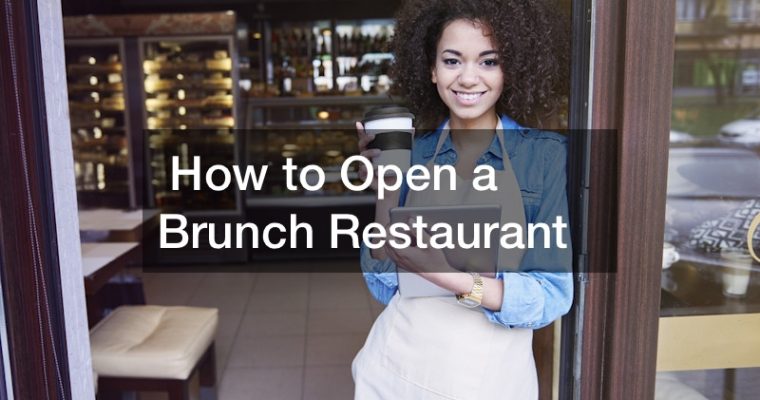
Have you been toying around with the idea of opening and running a restaurant? If so, you must have all the necessary business ‘ingredients.’ As a food entrepreneur with aspirations of having a thriving eatery, it’s crucial to exhibit culinary competency, professional business principles, and marketing acumen. You also need resilience and grit.
Creating an effective business plan is the first and most crucial step to realizing your restaurant idea. You need a detailed roadmap outlining everything, including financing, operations, and marketing. You can’t afford to wing it in such a competitive space. This starter guide provides essential restaurant opening tips to help you get started.
Pick a Restaurant Type
Like any other business, the restaurant industry has various types of establishments. You must brainstorm and choose one or two concepts that ignite your entrepreneurial spirit. You can open a fast-casual restaurant, a casual eatery, or a fine dining establishment. You can opt for a high-end, full-service restaurant if you have the finances and abilities.
Each of these restaurant types has its own set of operating costs, target market, and profit margins. Whatever you decide, ensure it aligns with your passion and expertise. More importantly, ensure there’s a market for your concept in the area you want to open your eatery. But how would you know that? You need to conduct market research.
Market research is among the most essential restaurant opening tips any entrepreneur needs. It is what will separate you from the 60% of new restaurants that fail within the first year, according to CNBC. When conducted thoroughly, it can help you create a blueprint of the restaurant’s ecosystem in your desired location. It will also help you understand customer behavior and preferences while identifying any gaps in the market.
Get the Commercial Property Cleaned

Once you have your market research and business plan in place, the next step is to look for a prime location for your restaurant. That means leasing a commercial property that will serve as your brick-and-mortar establishment. When scouting for one, consider accessibility, visibility, parking space, and zoning regulations.
You must thoroughly inspect the building before signing any agreement. Check if it can accommodate the kitchen, dining area, storage space, and office. Look for any structural damages that may need repair or renovation. If it pleases you, the next step on your list of restaurant opening tips should be cleaning the commercial space.
While you may think a few touch-ups will do the trick, hiring a professional cleaning service provider is best. They provide the deep cleaning that a restaurant space requires, especially in the kitchen and dining area. They will remove all the lingering dirt or residue from previous businesses and ensure it is ready for customization.
Get the Plumbing Inspected
Add plumbing inspection to your list of restaurant opening tips. If a business needs water supply and drainage, it’s a restaurant. You need water for everything from cooking, dishwashing, cleaning, you name it. Research by the U.S. Environmental Protection Agency estimated that the average sit-down restaurant uses about 6,773 gallons per day.
Your plumbing services must be fully functional and efficient with that much water usage. You don’t want to start dealing with leaks once your business is up and running. Before any renovations or construction, you must inspect your plumbing system. Get a professional to look at the pipes and fixtures to ensure everything is working correctly and up to code.
Remember to replace old or damaged pipes and fixtures if necessary. It would also be an excellent time to install water-saving devices to help conserve water and reduce costs in the long run. Additionally, the plumber should check the drainage system.
If it has small pipes or inadequate drainage, it could lead to clogs and backups, which can be disastrous for a restaurant. The last thing you want is for your kitchen to flood during peak dining hours. You also don’t have a problematic toilet either. Get them fixed before they become a health hazard for your employees and customers.
Get an AC Installed
A sit-down restaurant typically has a lot of people moving in and out. With all those bodies, it can get hot and stuffy quickly. That’s not the kind of dining experience you want to offer your customers.
Consider installing an air conditioning (AC)unit as part of your restaurant opening tips. A commercial AC helps keep the temperature comfortable for your diners. It can provide consistent airflow throughout the restaurant without hot or cold spots.
An AC is also essential in maintaining a quality work environment, especially in the kitchen, where it can get hot. Since your employees will spend long hours in that space, keeping them comfortable is crucial. A cool cooking area can reduce fatigue and increase productivity.
Moreover, an AC can help improve indoor air quality and reduce humidity. It is essential in a restaurant where food odors and steam from cooking can quickly build up. A well-ventilated space creates a more pleasant dining experience and helps prevent food spoilage.
However, when selecting an AC unit, ensure it fits appropriately for your restaurant space. You don’t want to end up with one that’s too small or too large. Such systems can lead to inefficiency and higher energy costs. Work with a qualified AC contractor to determine your restaurant’s most suitable cooling unit.
Update the Electric Work

Electricity plays a vital role in the running of a restaurant. It powers the lights, appliances, and equipment used in food preparation. Most modern kitchens rely on electricity almost entirely.
The U.S. Department of Energy approximates that fast food restaurants use about 73.9 kWh per square foot. On the other hand, full-service restaurants use an average of 43.5 kWh per square foot. These numbers only show how important electricity is in running a successful restaurant.
As part of your restaurant opening tips, consider hiring professional electricians to inspect the electrical system in your space. They should also update the wiring and circuit breakers to meet your needs. They can add more outlets to accommodate your kitchen’s various appliances and equipment. Additionally, if you wish to add charging sockets for your customers’ convenience, this is the perfect time.
Remember, electricity can be hazardous, especially in a busy place with many people, like a restaurant. In fact, according to a report by the Federal Emergency Management Agency, restaurant fires caused by electrical malfunctions account for 27.1%. For that reason, your electrician should also implement safety measures. That includes installing GFCI outlets in areas close to water outlets.
Upgrade the Kitchen to Your Style
The kitchen will be the heart of your restaurant. It is where all the magic will happen. Your menu could be top-notch, but if your kitchen is disorganized, dirty, or outdated, it could dent your reputation.
As part of your restaurant opening tips, invest in a kitchen remodel. You can opt for a confined remodel that targets specific areas like counter space, appliances, or flooring. Alternatively, you can go all the way and do a complete kitchen overhaul. But whatever way you choose, it should be an efficient and functional space.
Plan the necessary ventilation and exhaust systems for an open kitchen concept. Also, consider the layout of your kitchen to optimize workflow. You also want to make it attractive. A beautiful kitchen sells the brand and gives customers a sneak peek into what happens behind the scenes. So, plan for good lighting, quality materials, and an inviting color scheme that aligns with your restaurant concept.
Refrain from skimping on quality, even if you choose an enclosed kitchen concept. A lousy kitchen could quickly destroy your restaurant’s reputation and even kill it. Work with kitchen remodeling contractors who understand commercial kitchens and have previous experience in design.
Add Your Some Personality to The Property

Any marketing guru would advise you to personalize your brand. You can’t afford to pick and implement a template in your restaurant. You must be unique, not necessarily on the menu or cuisine but in the ambiance.
The restaurant industry is competitive. Zippia estimates that the U.S. has more than 749,404 registered restaurants in 2023. The numbers include big chain businesses that have more than 101,811 locations. With such high competition, you must stand out and grab the customer’s attention. The best way to do so is by self-expression.
With self-expression, you could get a significant competitive advantage. It allows you to cater to and appeal to your target audience emotionally. Personalization helps create an identity for your brand that customers can fondly remember.
Start with your dining area and front-of-house decor. You want to create an inviting ambiance for your customers that aligns with your restaurant concept. It should be comfortable and aesthetically appealing.
But be careful not to overdo it. Don’t let your personality overshadow the customers’ experience or interfere with their comfort. Instead, make it subtle by incorporating unique elements that add value and make your restaurant stand out. Custom builders and interior designers can help you achieve this goal without compromising functionality.
Secure Additional Financing if Needed
Sometimes, you can underestimate the costs of starting a restaurant in your business plan. Or you might face unexpected challenges that require more funds. In such situations, it is essential to have a backup plan and secure additional financing if needed.
In your list of restaurant opening tips, ensure you include additional finance. Things don’t always go according to plan, and it’s better to be prepared. One of the options for restaurant owners is to obtain a loan from a bank or financial institution.
Even if your restaurant is just a startup, some financial institutions specialize in providing loans to new businesses. According to Forbes, 18.2% of small businesses that applied for business loans listed startup costs as the main reason. That shows that it is a common practice among entrepreneurs. However, before applying for one, ensure you have proper financial projections to present to the lender. You should also research different options and compare interest rates and repayment terms to find the best fit for your needs.
However, you can also find investors or partners to help fill the financial gap. These can be family, friends, or even other business owners willing to invest in your restaurant idea. Just ensure you agree on repayment and their involvement in the decision-making.
Reach Out to Local Businesses to Grow Your Community
The success of your restaurant will not only rely on quality food and service but also on your connections within the local community. Networking should also be included in your list of restaurant opening tips. You can establish partnerships and cross-promote each other’s services by reaching out to local businesses. For example, you can collaborate with local bakeries to feature their goods on your menu.
Such a partnership can help you reduce costs by outsourcing some of your restaurant’s supplies. Additionally, you can promote your services to a broader audience if you partner with businesses such as local schools or offices. These arrangements create a sense of community support and can help drive more customers to your restaurant. Word of mouth is still one of the most powerful marketing tools, ensuring you build strong relationships with other businesses in your area.
Develop Your Menu

The last item on your restaurant opening tips checklist should be developing your menu. The type of restaurant you picked and your target customer demographic should influence your menu creation. It is also essential to consider prevailing trends such as vegetarian, ethnic cuisine fusion, and tortillas.
Consider the associated costs and your competitor’s prices when conceptualizing your menu dishes. You want to price yours competitively while still making a profit. Additionally, aim for a balanced menu with different appetizers, entrees, and dessert options. Offer seasonal or weekly specials to keep your menu fresh and exciting.
Additionally, factor in the availability of ingredients, especially with ethnic cuisine, when creating a menu. You want to source the best quality ingredients while still keeping costs manageable. Also, consider offering varying spiciness or customization options to cater to individual preferences.
A restaurant can be a lovely and rewarding venture for an entrepreneur, but it requires careful planning. Following these essential restaurant opening tips can set you up for a successful experience in the food industry. You can bring your dream restaurant to life with a well-developed concept, a solid business plan, and a mouth-watering menu.




